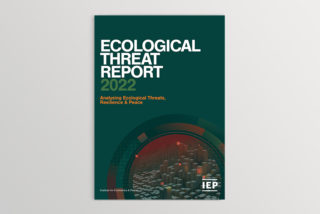October 19, 2022. Today marks the annual launch of the Ecological Threat Report (ETR), produced by the Institute for Economics and Peace (IEP), featuring exclusive research from the Lloyd’s Register Foundation World Risk Poll.
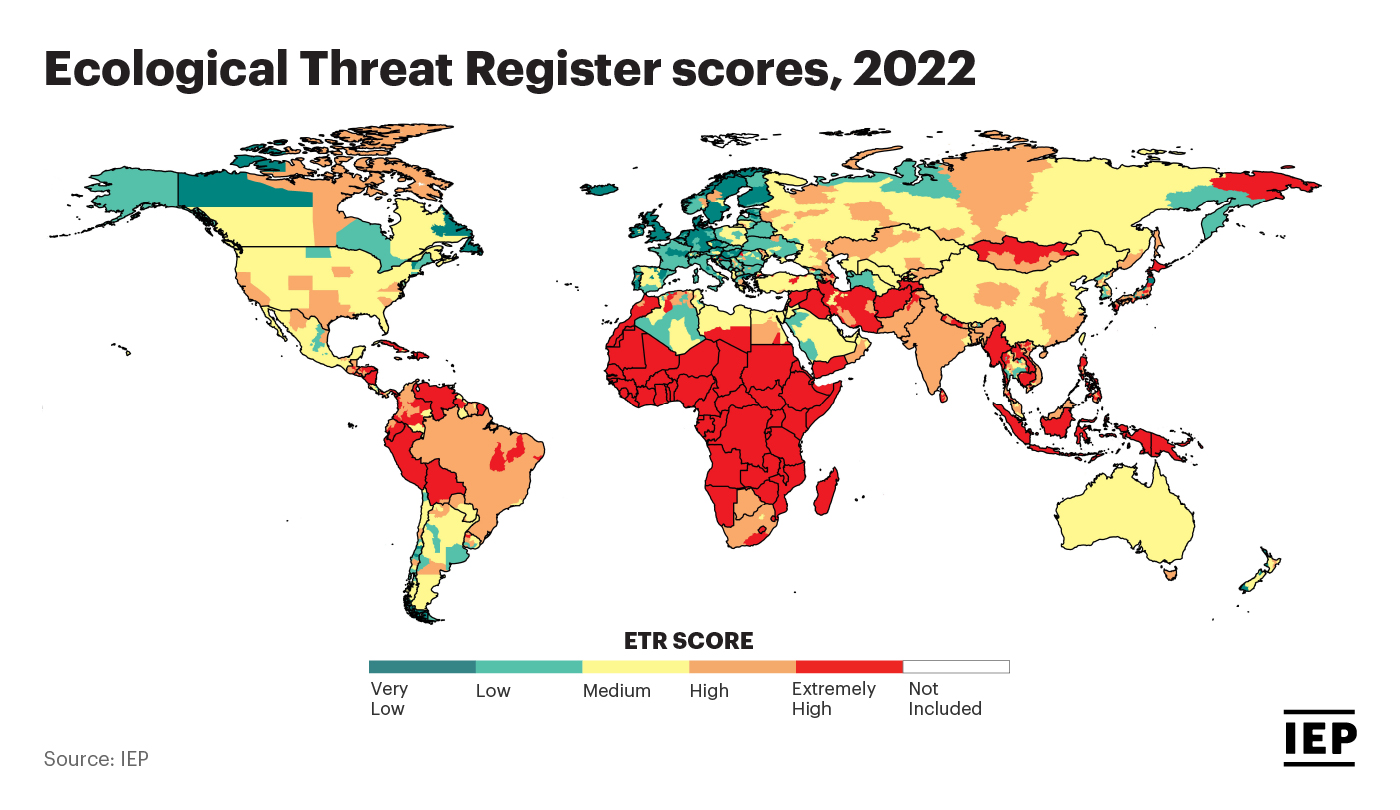
Download the 2022 Ecological Threat Report
Each year, the ETR analyses ecological threats to assess which countries are most at risk from conflict, civil unrest and displacement caused by ecological degradation, and climate-related events. The main finding from the ETR is that without concerted action, current levels of ecological degradation will worsen, intensifying existing conflicts, becoming a catalyst for new conflicts, and increasing forced migration.
The report analyses ecological risk, societal resilience, and peace for 228 countries and territories, 3,638 administrative districts, and 250 cities, assessing their ability to manage their challenges between now and 2050. It also highlights 27 ‘hotspot’ countries, home to an estimated 768 million people, which face the worst ecological threats and have the lowest societal resilience. 23 of the 27 are in sub-Saharan Africa and MENA.
41 countries are currently facing severe food insecurity, impacting economic development, public health, and social harmony, with 830 million people at risk, with 89% residing in sub-Saharan Africa, followed by MENA with 49 million.
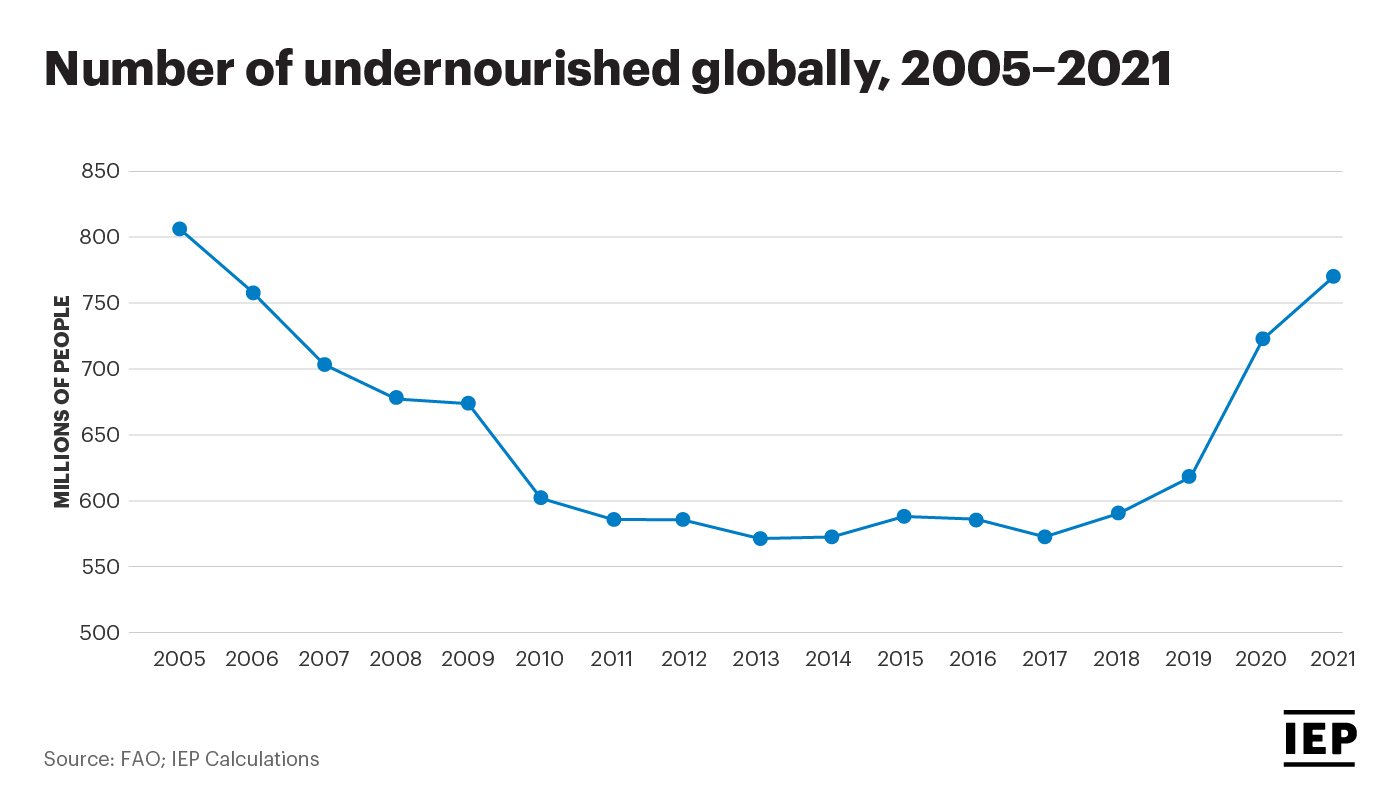
Severe food insecurity describes a state where an individual has exhausted their food supplies, and their health, nutrition, and well-being are at serious risk. The number of undernourished people has risen consistently since 2017, increasing by 35% in 2021 to over 750 million people. Undernourishment, where a person’s habitual food consumption is medically insufficient to sustain them, is expected to deteriorate due to increasing ecological degradation, rising inflation, and the Russia-Ukraine war. In 2021, almost 92% of the world’s undernourished people lived in low to very low peace countries.
Food insecurity is connected to water stress, defined as ‘when more than 20% of the population do not have access to clean drinking water’; without adequate water capture, it is impossible to provide sufficient food.
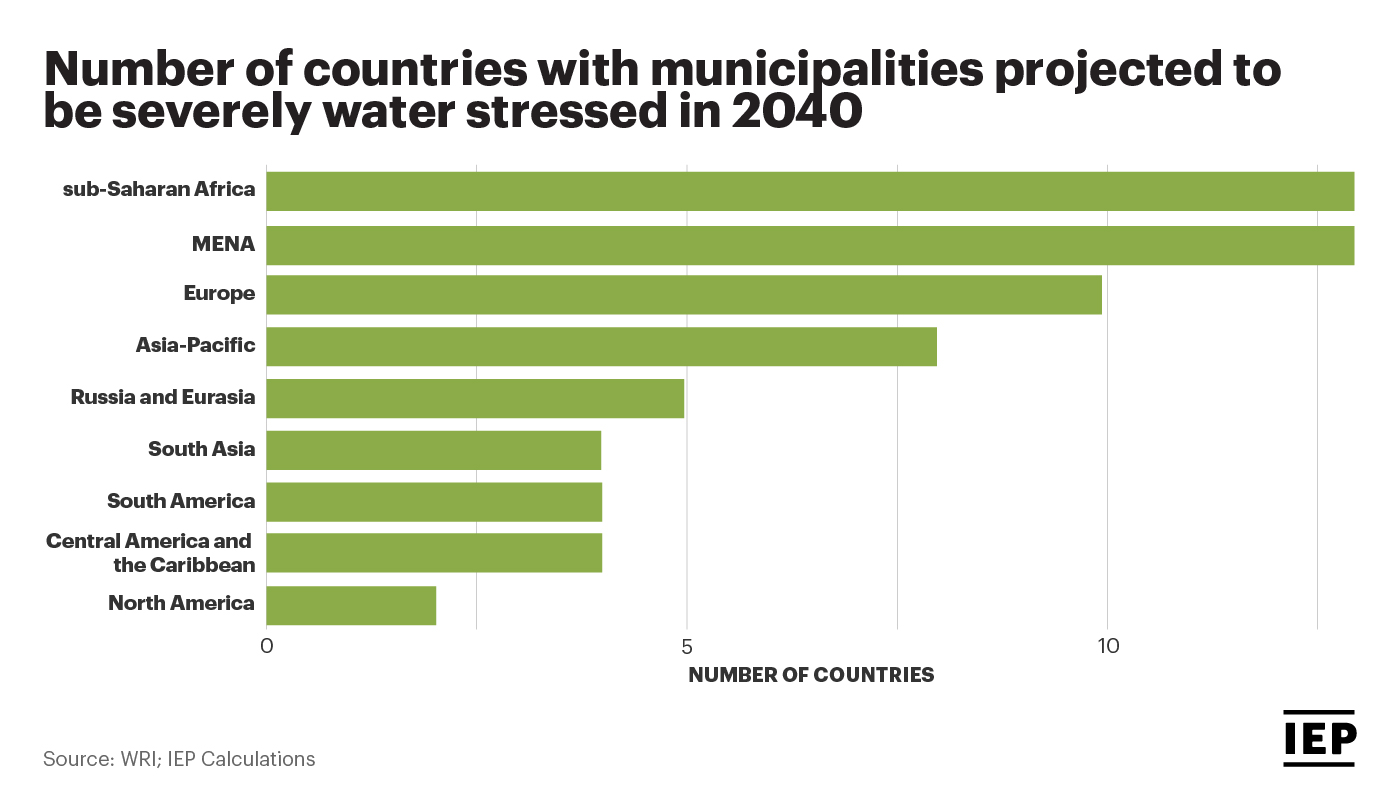
More than 1.4 billion people across 83 countries now face extreme water stress. Several European countries are projected to experience water stress by 2040, including Greece, Italy, Netherlands, and Portugal.
Most of the countries expected to suffer increases in water stress between now and 2050 are found in sub-Saharan Africa and MENA. Currently, all but one country in sub-Saharan Africa face extreme water stress.
There are currently 33 megacities, with the number expected to increase to 47 by 2050. The megacities most likely to face the harshest challenges are Kinshasa, Nairobi, and Lagos.
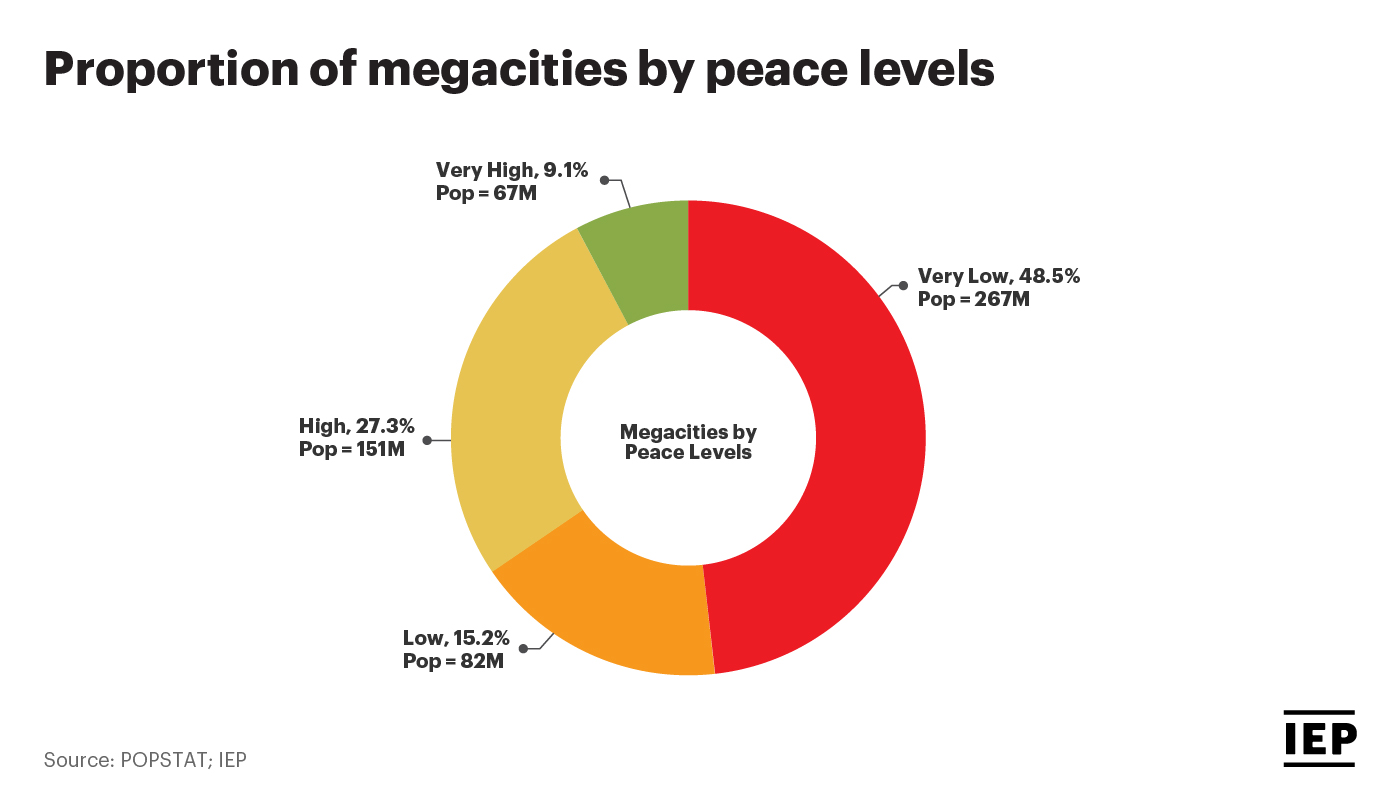
Over 60% of megacities are in low-peace countries. They have the highest population growth rates, poorest sanitation, higher levels of petty and organised crime, and pervasive air pollution. However, they lack the financial capacity and governance to adequately cope with these challenges. The most challenged cities have the highest population growth, highlighting the precarious relationship with unsustainability.
Air pollution costs the world $8.1 trillion annually – or 6.1% of global GDP – claiming between 6-9 million lives. Nine cities have over 20 times the maximum level of air pollution recommended by WHO, including Lahore, Kabul and Agra.
The 40 lowest peace countries are projected to increase their population by 1.3 billion, making up 49% of the world’s population. The countries facing the worst ecological threats will see the biggest increases, with sub-Saharan Africa’s population projected to increase by 95%.
Steve Killelea, Founder and Executive Chairman of IEP, said:
As we approach COP27, this report is a timely reminder that the costs of many of the existing ecological challenges will only be amplified by climate change. The world’s current approach to the countries suffering the worst climate-related issues is not working; ecological threats are increasing and have systemic causes that require systemic solutions.
Governments and international agencies must invest in building long-term resilience to avert future ecological destruction, forced migration and conflict. The Russia-Ukraine war highlights the effects of conflict on forced migration, with 12 – 14 million Ukrainians currently displaced in neighbouring countries. Developmental programmes should focus on micro-enterprises that capture water, improve agriculture and on value-added manufacturing. This will improve the lives of the people who are suffering the most.
Since 2019 the world has become less concerned about climate change, dropping by 1.5% to 48.7%. Regions exposed to the highest levels of ecological threat are on average the least concerned with climate change, with sub-Saharan Africa and South Asia ranking war, terrorism, crime, violence and livelihoods as of greater concern.
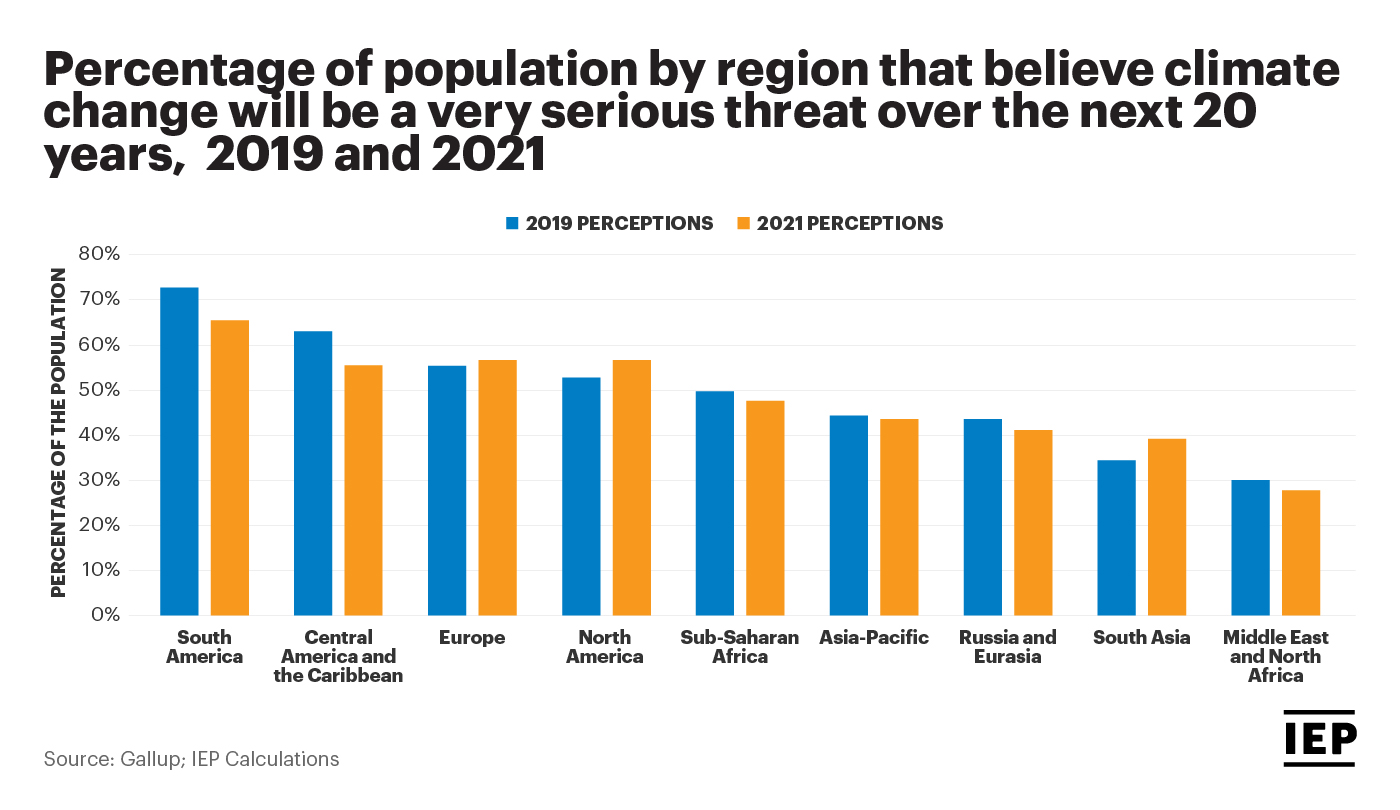
Singapore recorded the largest fall in serious concern for climate change, with a decline of almost a quarter between 2019 and 2021 to 49.4%. 13 countries in Europe recorded a decline in concern for climate change, with the largest in Belgium. The populations of both Singapore and Belgium were more likely to be concerned about road safety and their health than climate change.
In China, the world’s largest polluter, only 20% of citizens believed climate change was a serious concern, falling 3% since 2019, one of the lowest in the world. The third largest polluter, India, scored poorly at 39% but improved by 3.7%. The US, the world’s second largest polluter, showed slightly more concern than the global average, at 51.5%.
The impact of natural disasters is decided by a country’s level of resilience. Asia-Pacific is the region most impacted by natural disasters, followed by sub-Saharan Africa, and Central America and the Caribbean. Flooding is the most common natural disaster globally, with 5,079 incidents recorded since 1981. Over the last decade, the average global cost of natural disasters has been $200 billion per annum. This is four times higher than in the 1980s.
With natural disasters becoming more frequent, communities will struggle to recover before the next one occurs. This can lead to forced mass migration. Destination countries in the EU, including Germany, Sweden, Austria, and Greece took over a million refugees in 2021.
In 2021, countries that experienced the highest internal displacements from conflict and natural disasters included Syria, Ethiopia, DRC, Afghanistan, and South Sudan.
